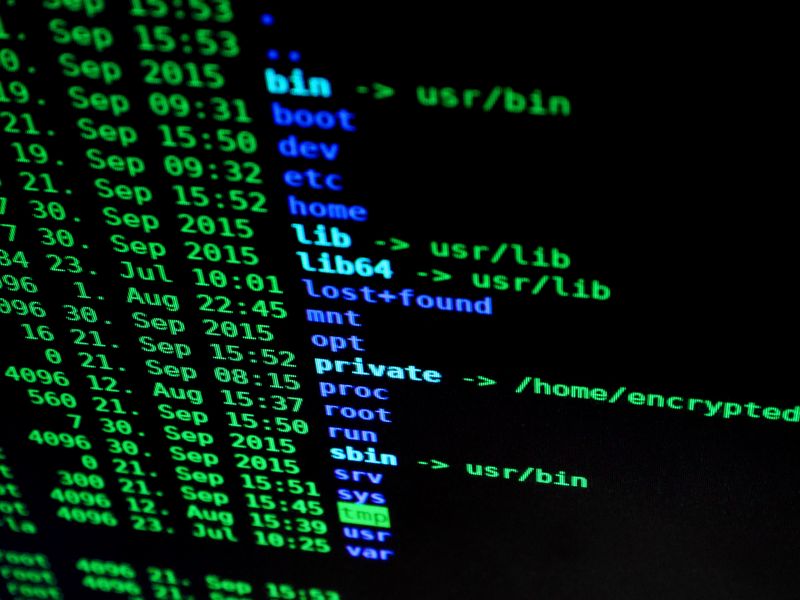Sophisticated Attack Exploits Side-Channel Vulnerability in Apple CPUs
Understanding Side-Channel Attacks
Side-channel attacks are a type of exploit that targets the additional information generated by computer systems or hardware, such as sound, light, electromagnetic radiation, or the time it takes to complete certain computations. Unlike traditional software hacks, side-channel attacks take advantage of these physical characteristics to extract sensitive information without relying on unsecured passwords or software vulnerabilities. One form of side-channel attack is the timing attack, which involves analyzing the time it takes to complete particular tasks.
The iLeakage Attack
On Wednesday, four researchers, including two who uncovered the Spectre processor vulnerability in 2018, published details of a new side-channel attack called “iLeakage.” This exploit targets all recent models of iPhones, iPads, and MacBooks with Apple silicon CPUs. The researchers notified Apple of their findings on September 12, 2022.
How iLeakage Works
iLeakage utilizes speculative execution, a technique used by modern CPUs to predict and execute tasks in advance, thereby increasing processing speed. However, the cache within the CPU holds valuable data, including information staged for upcoming instructions. The combination of Apple WebKit capabilities inside a browser and JavaScript enables iLeakage to gain access to the cache contents. The researchers have developed a speculation-based gadget that reads the contents of another webpage when a victim clicks on a malicious webpage.
A Successor to Meltdown/Spectre
iLeakage can be seen as a spiritual successor to the Meltdown and Spectre vulnerabilities, which exposed fundamental security flaws in CPUs. Meltdown and Spectre broke the isolation between different applications and between applications and the operating system, compromising the security measures that users typically rely on. iLeakage expands on this concept by targeting the isolation between browser tabs, potentially exposing users’ sensitive data.
The Severity and Impact of iLeakage
Although the researchers describe iLeakage as a significantly difficult attack to orchestrate end-to-end, the potential consequences are severe. Successful exploitation of iLeakage could compromise any data that users transmit online, including logins, search histories, and credit card details. In demonstrations, the researchers showed how the exploit could expose Gmail inboxes, YouTube watch histories, and Instagram passwords. iPhone users are particularly vulnerable since Apple’s policies require all iPhone browser apps to use Safari’s engine, making them susceptible to iLeakage. While Apple has developed a mitigation for iLeakage, it is only available for MacBooks and remains in an unstable state.
Apple’s Response and Future Mitigation
Apple acknowledges the iLeakage vulnerability and plans to address it in a future software release. However, patching chip-level vulnerabilities is challenging, which explains the absence of an immediate fix. While the current mitigation may take time to stabilize, it is likely that Apple will ultimately develop an effective patch if iLeakage becomes widely exploited.
Protecting Against Side-Channel Attacks
Safeguarding Web Browsers
Given the pervasive nature of side-channel attacks and their potential for severe consequences, it is crucial to adopt proactive measures to safeguard web browsers. Browser developers must prioritize security by robustly addressing vulnerabilities in their software and ensuring effective isolation between browser tabs. Additionally, users should regularly update their browsers to the latest versions to benefit from security enhancements and fixes.
Enhancing Internet Security
Side-channel attacks serve as a reminder of the importance of strong internet security practices. Users should employ robust and unique passwords for all their online accounts and enable two-factor authentication to add an extra layer of protection. Regularly monitoring account activities and promptly reporting any suspicious or unauthorized access is also crucial. Implementing reputable security tools, such as antivirus software and secure browsing extensions, further strengthens defenses against potential attacks.
The Role of Privacy and Ethical Considerations
The existence of side-channel attacks raises philosophical questions regarding the balance between security and privacy. As technology advances, the potential for extracting information through indirect means becomes more significant. It is imperative to continue discussions surrounding ethical considerations in uncovering vulnerabilities and developing mitigations. While researchers play a crucial role in identifying and disclosing vulnerabilities, responsible disclosure practices must prioritize user protection and ensure timely fixes from developers.
Editorial: The Urgency of Addressing Side-Channel Attacks
The Epidemic of Vulnerabilities
The revelation of the iLeakage attack underscores the ongoing prevalence of vulnerabilities in modern technology. From the Meltdown and Spectre vulnerabilities to the more recent iLeakage exploit, these discoveries expose the complexities and challenges of securing computer systems and hardware. As our reliance on technology grows, so does the urgency to address these vulnerabilities and reinforce security measures.
A Call for Collaboration
To effectively combat side-channel attacks and other vulnerabilities, collaboration among researchers, developers, government bodies, and technology companies is essential. Open lines of communication and information sharing can facilitate the rapid identification and remediation of security flaws. By fostering a collective approach to cybersecurity, we can enhance the overall safety of our digital ecosystem.
Investing in Research and Development
To stay ahead of sophisticated attacks like iLeakage, significant investments in research and development are vital. Experts must continue pushing the boundaries of technology to identify potential vulnerabilities and develop robust countermeasures. Governments and organizations should allocate resources to support ongoing research efforts aimed at strengthening security measures.
Conclusion: Navigating the Risky Digital Landscape
Vigilance in an Ever-Changing Threat Landscape
As technology advances, so do the tactics and capabilities of cyber attackers. Users must remain vigilant and stay informed about the latest threats and security measures. By adopting best practices, promptly applying software updates, and leveraging trusted security tools, individuals can bolster their defenses against potential side-channel attacks and other forms of cybercrime.
Striving for a Secure Digital Future
While side-channel attacks like iLeakage reveal vulnerabilities in current technologies, they also serve as a catalyst for improved security practices and innovation. It is incumbent upon technology companies, developers, and users to work together, prioritize security, and embrace a long-term commitment to safeguarding our digital future. Only through collective effort can we navigate the challenging landscape of digital threats and ensure a safer online environment for all.

<< photo by Dan Nelson >>
The image is for illustrative purposes only and does not depict the actual situation.
You might want to read !
- The Importance of Investing in Municipal Cybersecurity: Healey-Driscoll Grants $2.3M to CyberTrust Massachusetts
- Unmasking the Octo Tempest: The Terrifying Rise of Physical Violence as a Social Engineering Tactic
- The Hidden Expenses of UEM: Uncovering the True Cost of Switching
- Critical Vulnerabilities Patched: Strengthening Browser Security in Firefox and Chrome
- The Hidden Dangers: Unveiling the Security Risks of Browser Extensions
- Why Browser Security Must Evolve to Combat Sneakier Phishing Attacks
- The Rise of GPU Side-Channel Attacks: Uncovering a New Vulnerability
- Data at Risk: Unveiling the Menace of GPU Side-Channel Attacks
- The Rising Threat: How Side-Channel Attacks Are Exploiting Modern CPUs
- Intelligence Betrayed: The Espionage Case Shaking the NSA’s Foundations
- The Rise of AI Vulnerabilities: Google Expands Bug Bounty Program to Protect Against Emerging Threats
- SonicWall Data Highlights the Persistent Threat of Ransomware in the Enterprise
- Exploiting the Web of Vulnerabilities: Unleashing the Power of an Internet-Wide Zero-Day Bug
- Breaking Through the Clouds: Researcher Unveils Innovations to Overcome Cloudflare’s Firewall and DDoS Protection
- The Rise of Record-Breaking DDoS Attacks: Exploring the Impact of the HTTP/2 Rapid Reset Zero-Day Vulnerability




